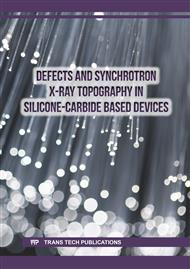p.43
p.51
p.57
p.65
p.71
p.81
p.93
p.115
p.127
Optimization of Aircraft Fuel Dump Rate towards the Mitigation of Post-Impact Fire
Abstract:
This study seeks to improve the utilization of compressed air towards a faster fuel jettisoning, to increase the survival rate of passengers in the event of an accident or aborted takeoffs by augmenting the already existing means of dumping fuel with no considerable increase in overall weight. The aircraft fuel dump sub-system was isolated, this process was achieved with the aid of the venturi effect. The engine compressor marks the start of the aircraft fuel dump sub-system while an exterior nozzle for displacing the fuel marks its end. This system achieved jettisoning through bled-off air from the compressor, passing through a converging-diverging nozzle (primary supersonic nozzle), thereby creating a vacuum in the mixing chamber. A jet which provides a direct connection between the fuel tank and the mixing chamber sucks fuel from the tank, where bypassed air from the compressor expels the sucked air in fine particles. After running the simulation, the mass flow rate was computed. The compressed air inlet has a mass flow rate of 58.5193(Kg/S), the kerosene inlet 1.2385(Kg/S) while the outlet has a relative value of-59.6541(Kg/S).This study seeks to improve the utilization of compressed air towards a faster fuel jettisoning, to increase the survival rate of passengers in the event of an accident or aborted takeoffs by augmenting the already existing means of dumping fuel with no considerable increase in overall weight. The aircraft fuel dump sub-system was isolated, this process was achieved with the aid of the venturi effect. The engine compressor marks the start of the aircraft fuel dump sub-system while an exterior nozzle for displacing the fuel marks its end. This system achieved jettisoning through bled-off air from the compressor, passing through a converging-diverging nozzle (primary supersonic nozzle), thereby creating a vacuum in the mixing chamber. A jet that provides a direct connection between the fuel tank and the mixing chamber sucks fuel from the tank, where bypassed air from the compressor expels the sucked air in fine particles. After running the simulation, the mass flow rate was computed. The compressed air inlet has a mass flow rate of 58.5193(Kg/s), and the kerosene inlet 1.2385(kg/s) while the outlet has a relative value of -59.6541(kg/s).
Info:
Periodical:
Pages:
127-140
Citation:
Online since:
June 2023
Price:
Сopyright:
© 2023 Trans Tech Publications Ltd. All Rights Reserved
Share:
Citation:


